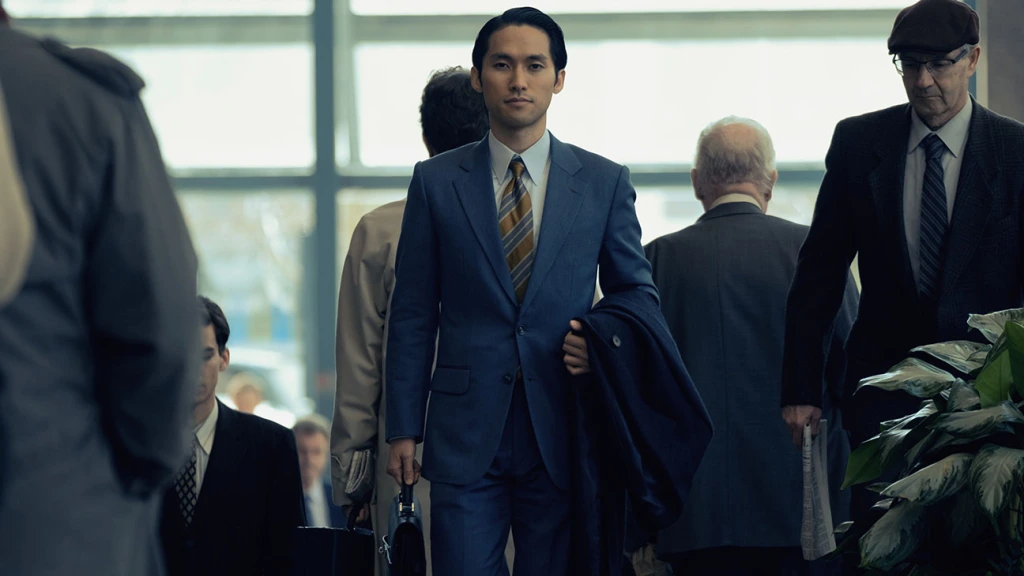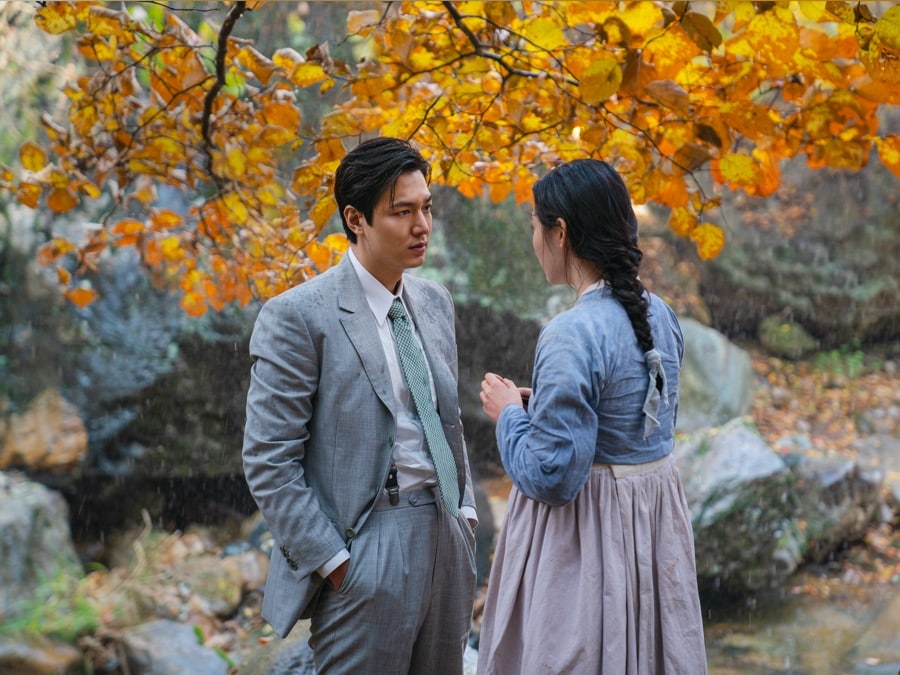Read also:
How to Watch FX Live Without CableHow To Watch AMC Without CableHow to Watch ABC Without CableHow to Watch Paramount Network Without CableApple TV+’s adaptation of the best selling novel boasts extravagant set pieces & excellent performances, but suffers from a condensed storyline & underdeveloped characters
The news that Apple TV+ would shell out top dollar for a limited series based on Min Jin Lee’s family epic, the 2017 novel Pachinko, was generally well-received by fans of the book. With book to small screen adaptations like Station Eleven and My Brilliant Friend growing both increasingly common, and popular, it seemed like a natural fit for the sprawling story of a Korean family displaced by the Japanese occupation of their homeland during the 20th century.
Though Apple’s Pachinko unspools over eight hour-long episodes, after finishing the final one I still found myself frantically searching to figure out if there were more installments unreleased to critics, or a forthcoming second season. Leaving the audience wanting more can be one of a show’s greatest assets, but in Pachinko’s case, the compliment is a double-edged sword. Everything presented is lushly shot and captivating, but a sudden ending leaves the series feels incomplete.
In a move that may shock fans of the novel, Pachinko all but entirely eliminates the second generation of characters, whom essentially amount to the whole middle section of the book. The series, adapted by screenwriter Soo Hugh (The Killing), instead chooses to focus tightly in on family matriarch Sunja (played at three different ages by Oscar-winner Youn Yuh-jung, Minha Kim, and Yu-na Jeon), a Korean girl born in a tiny fishing village off the coast of Busan, and her grandson Solomon Baek (Jin Ha), an American-educated businessman trying to climb the ranks of his firm in Osaka.
When Solomon is tasked with trying to persuade an elderly Korean woman to sell her family home to his firm so they can develop the space into luxury properties, he finds himself unexpectedly torn between the Western world he grew up in and the Korean culture from which he’s always felt alienated. Meanwhile, a mysterious woman from his past named Hana (Mari Yamamoto) keeps making increasingly distressing calls to his office.

The story is non-linear and, in flashbacks to the past, we learn about Sunja’s early life in pre-World War II Yeongdo, where Japanese officers have the power to search or seize anyone at any time. One of the few Koreans slyly navigating the system to his own benefit is Koh Hansu (Lee Min-Ho), a wealthy fish broker whose pristine Western suits stand out in a sea of traditional hanboks. Fittingly, his arrival on the island triggers a series of events that will tear Sunja away from her homeland for good. When a handsome young Christian pastor, Isak (Steve Sang-Hyun Noh), also trying to carve out a place for himself under the oppressive Japanese rule, comes to stay at Sunja’s mother’s boarding house, he further complicates her formerly simple, small town life.
The story unfolding between Sunja, played with a winsome stubbornness by Kim, and the men in her orbit is so interesting and rich that it can feel like a shame to return to the 1989 scenes, where the material feels somewhat thinly stretched, despite Ha’s wonderfully charming and open portrayal of Solomon. The decision to focus on Sunja and Solomon exclusively isn’t a bad one on its face, especially when adapting a book that covers a large ensemble over seventy-nine years. Unfortunately, this leaves other characters on the show feeling one dimensional, and even perfunctory in some cases.
It’s hard to understand the growing friction over money and status between Sunja and her son Mozasu (Soji Arai) when the series hasn’t really fleshed him out, or bothered to explain why his values are so different from his mother’s. Mozasu owns a Pachinko parlor, where gamblers play the pinball-like game for slot-machine style wagers. Despite the story being named for this very game, and the Pachinko parlor serving as an eye-popping setpiece in the fabulously choreographed theme song, the series barely scratches the surface of the family’s uneasy relationship with the game that serves as their livelihood.
The story unfolding between Sunja and the men in her orbit is so interesting and rich that it can feel like a shame to return to the 1989 scenes, where the material feels somewhat thinly stretched.
It’s too bad because Arai could not be more delightful in the role, and his father-and-son scenes with Ha feel earnest. Fan-favorite characters like Mozasu’s girlfriend Etsuko (Kaho Minami), Sunja’s sister-in-law Kyunghee (Jung Eun-chae), and Isak’s brother Yoseb (Junwoo Han) are all movingly portrayed by their respective actors and given similarly frustrating short shrift when it comes to screentime. Another minor character pops up, confusingly, for what amounts to a single detached scene.
Many of the additions made are excellent, particularly those that give Youn Yuh-jung space to shine. A new storyline about elderly Sunja returning to Korea to try to find her father’s grave was particularly moving, with Youn expertly shifting between giddy joy at returning home and childlike despair over unexpected obstacles in her path. The television show places more importance on bonding between members of the same generation than the book did, and the scenes of now-elderly Korean women sharing their experiences with each other were insightful additions.
However, not all the changes work as well to further the themes of the story. Particularly glaring is the addition of a white American character played by Jimmi Simpson, who almost seems like he was cast just to guarantee Western audiences a familiar face in the trailer. In the novel, Solomon’s Japanese co-worker uses his Korean heritage against him by subtly playing Solomon against his own community and passive-aggressively sabotaging him behind the scenes, while pretending to be his friend and ally. Here, as played by Simpson, the character is just a bumbling ugly American with a bad temper. He’s a passable foil for Solomon but does nothing to further the audience’s understanding of the complicated relationship between Japanese and Korean people in the way that the novel does.

Even more maddeningly, in the penultimate episode, immediately following the reveal of a major plot twist about the central family, the show whisks us off for an entire installment centered around Koh Hansu’s experience working for an American family in the Kanto region of Japan in 1923. Hansu is a fascinating character, played with just the right amount of charm and menace by Lee. If the series were longer—even ten episodes instead of eight—it would be easier to excuse, and even enjoy the digression from the main plot. But instead the series feels like it’s living on borrowed time, scrambling to cram almost a century of events into the time allotted, which makes it much harder to muster sympathy for the random kindly Americans being sprinkled into a story about tragedies that changed Japan and Korea forever.
Hansu’s episode revolves around a 7.9 magnitude earthquake that struck Kanto and took more than 100,000 lives, including thousands of Korean immigrants who were murdered after being wrongfully scapegoated for the natural disaster. Though it seems only tangentially related to the central thrust of the plot, the inclusion of the earthquake makes sense when you remember exactly how much cash Apple TV+ spent on this series. The disaster sequences are terrifying, especially when shot from a traumatized Hansu’s perspective in a muddled, disorienting first person style. Smoke and dust cloud the scene, and fleeing people emerge from the haze as if from thin air. It’s skillfully executed, even if it feels like it was only included as an epic setpiece to compete with other streaming titans.
The show’s tendency to focus on the most visually dramatic instances of colonialism makes sense for the medium, though it can sometimes feel like the story is being drained of its more subtle examples of oppression. Most mentions of the sexual exploitation of Korean women by the Japanese government have been excised from the story, which feels at odds with its running theme of women being specifically targeted by oppressive forces. Characters who were previously scooped up and arrested by soldiers for being in the wrong place at the wrong time are now actually secret resistance conspirators, undercutting plot beats about how totally uninvolved civilians were vilified for nothing.
Funnily, cinematographer Florian Hoffmeister (The Terror, A Quiet Passion) is at his best in some of the story’s most quiet moments. The image of young Sunja slowly wading into the sea, her hanbok spreading around her like a cloud in the water, stuck with me long after I’d finished the first episode. Even in the earthquake episode, some of the most chilling shots come before and after the disaster: smoke barely visible beyond a manicured Japanese garden, black tree branches silhouetted against lantern light, a raging fire as seen through a crack in the slats of a wagon. One of the most affecting visuals of the entire series is a child’s perspective of his mother as she disappears beyond a rushing crowd of people.
Ultimately, the piece of the novel that Pachinko best preserves and carries over to the screen is the idea that families are fated, that we are forever bound to each other by ties we may not understand. Prodigal sons (and daughters) are drawn home by triumphs and tragedies alike. “Your grandfather’s blood is in your veins,” Mozasu reminds Solomon, fiercely protective of his Korean father’s legacy even as he tries to push his son away from the family business. At the center of it all is Sunja—a mother who gave up everything for her child, a daughter who had no choice but to leave the parents she loved behind. It’s a universal story that’s beautiful when it finds these moments of specificity, like Sunja tasting Korean rice for the first time since leaving home. When the series abruptly ends just as two characters whose lives are deeply intertwined meet for the first time, it feels like a cruel joke. It may be possible to have too much of a good thing—but in Pachinko’s case, it’s too little.
Pachinko premieres on Apple TV+ March 25th.